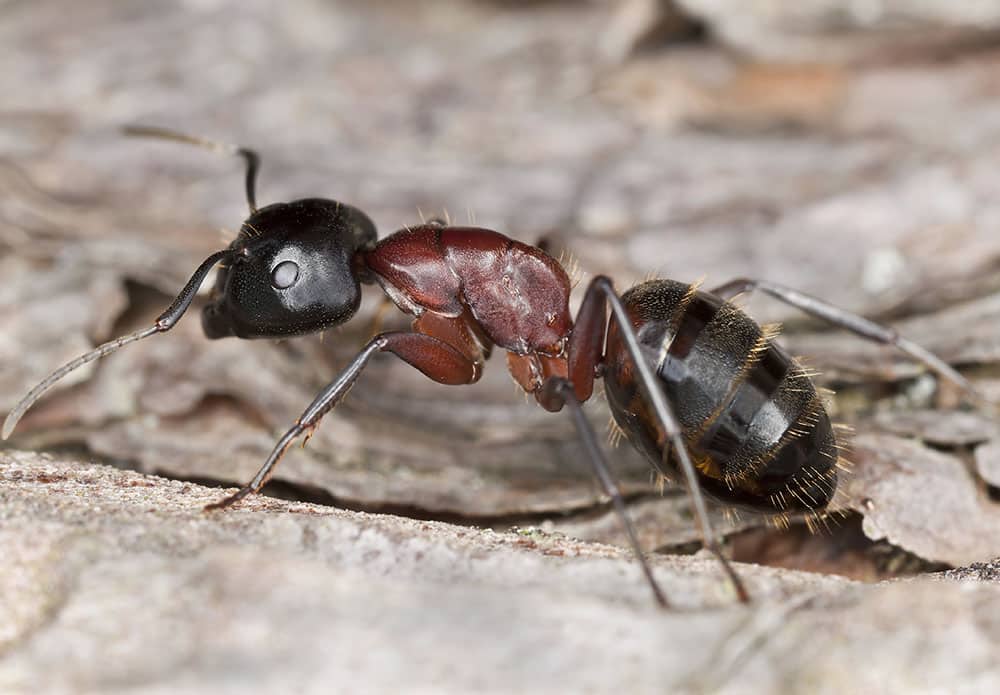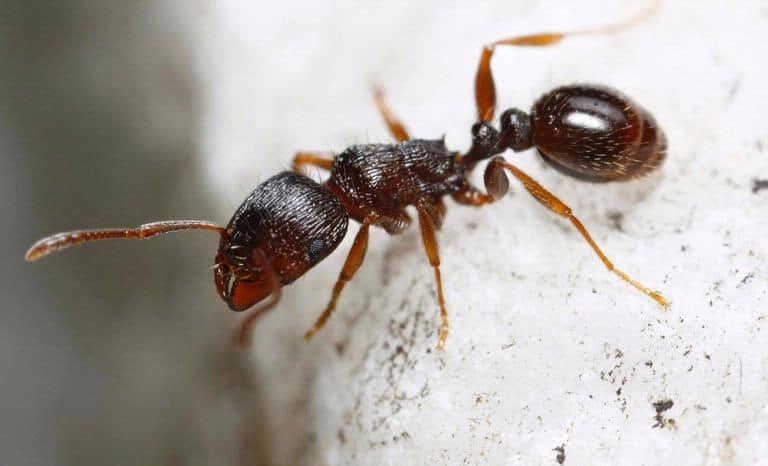Ant Identification
Ants are social insects that live in colonies that can have 1 or more queens. An average sized colony is comprised of around 4,000 ants. They can colonize in the ground, leaf clutter, or inside a structure. They have a 3-part segmented body: the head, thorax, and gaster. Reproductive ants are winged. These insects can carry 20 times their body weight and live an average of 45-60 days.
Carpenter Ants
Twenty-four species of carpenter ants are structural or nuisance pests in North America, although each species may be found in different regions. All carpenter ants can be recognized by the evenly rounded thorax when viewed from the side. Color is variable among the species, from black, red and black, to even a yellowish-brown. The black carpenter ant is the most common species in the East; the western black carpenter ant is most common species in the West.
Carpenter ants are the largest pest ants that will be found infesting structures. Workers may measure up to one half an inch and queens may be even larger. However, carpenter ants are polymorphic and have several different sized workers. Most colonies establish satellite colonies near a parent colony that is usually outdoors in a tree or tree stump, firewood, landscape timber, etc. Although carpenter ants excavate wood, they readily establish satellite colonies in structural voids, especially near moisture. Colonies can be found by following foraging ants along their trails. Since carpenter ants are primarily active at night, nighttime inspections are more effective at locating their colonies. Finding piles of sawdust containing insect parts may also indicate that a colony is nearby.
Carpenter ants excavate galleries in wood and are considered wood-destroying organisms because of this habit. Carpenter ant colonies are usually constructed in areas with excessive moisture, such as areas where your roof or pipes have leaked. Colonies are difficult to locate because they are located in difficult-to-reach sites and are often supplemented by separate, smaller satellite colonies (sub-colonies away from the main colony). Foraging ants are regularly seen in homes and buildings but this does not necessarily indicate an active carpenter ant infestation within the structure. Many times carpenter ants foraging within homes are originating from outside sources, such as woodpiles and trees.

Biology and Behavior
Red Pavement Ants
Pavement Ants, which usually make their homes in pavements, are small (1/8–1/16-inch long). They are black-brown ants, with paler legs and antennae. The abdomen is all black. They are distinguished by two spines on the back, two nodes on the petiole, and grooves on the head and thorax. The colonies can be moderately large. Swarmers usually appear in June or July; however, they have been reported at other times of the year.
